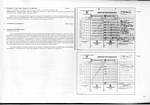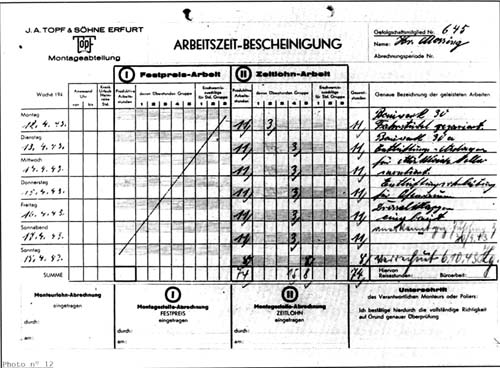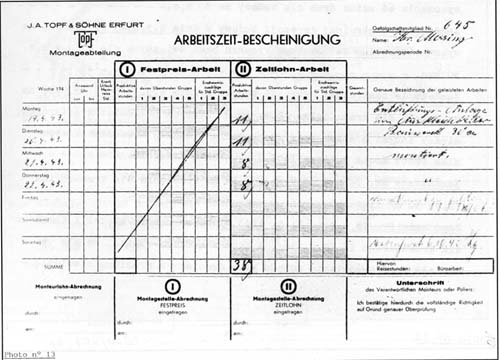|
|
 |
 |
AUSCHWITZ:
Technique
and Operation
of
the Gas Chambers © | |
|
| |
 |
Back |
 |
Contents |
Page 439 |
 |
Home
Page |
Forward |
 |
| |
| |
| 14. |
Beschlage für 1 Stück Gasfür
/ fittings for 1 gas[tight] door |
[Photo 16] |
| |
|
|
| |
[Volume 11 of the
Hoess trial, Annex 15, known as "Schlosserei WL", order No 322 of
16th April 1943] 16/4/43 order 322. Krematorium III
worksite 30a: supplementary order to 1242. Subject: Fittings for 1
gas door as per Order 957 and as already delivered. Operative:
Mirek. Completed: 20//4/43.
Orders 957 and 1242
correspond to another register, preceding that of “Schlosserei WL”
which was not found by the Polish or Soviet investigation
commissions. Resulting from the “Schlosserei”, order of 16th April
1943 for the iron required for fittings of 5 “Gastüre”, orders 322
and 323 are for the fittings for 5 gas doors: 1 for Krematorium III
(322) and 4 for IV (323). |
| |
|
|
| 15. |
1 Gasdichtetür / 1 gas-tight
door. |
[Photos 17 and
18] |
| |
|
|
| 16. |
14 Brausen/14 [DUMMY] showers
[File BW 30/43, page 24] |
|
| |
|
|
| |
Inventory [Photo
18] annexed to the handover document for Kremtatorium III dated
24th June 1943 [Photo 17], signed by the head of the
Bauleitung, Bischoff, and one of his officers, Kirschneck [File BW
30/43. page 20]. As the verso of this document is not known at
present, it is not known whether the presence of a “Gasdichtetür” in
the basement is noted there, as on the verso of the handover
document for Krematorium II. The mention of a “2 year guarantee” is
incorrect, two firms having refused to give such a guarantee to the
Bauleitug. Messrs Topf, who built the furnaces, considered that such
a period was incompatible with the planned incineration rates and
the reservations expressed by the Topf engineers, who were perfectly
aware of the “abnormal” functions of the Krematorien, are quite
understandable. Vedag, a subcontractor for the Huta firm,
responsible for the damp-proofing of the basements and “cellars” of
Krematorien II and III refused for technical reasons to give a
guarantee of two years for the watertightness of these
premises.
This document [Photo 18] is the only
one known at present that proves, indirectly, the existence of a
HOMICIDAL GAS CHAMBER in Leichenkeller 1 of Krematorium III. For the
full explanation of this point, see “One proof, one single proof”.
|
|
 |
Photo 12 |
|
| Photo 13 |
 | |
| |
AUSCHWITZ:
Technique
and operation
of the gas chambers
Jean-Claude Pressac
© 1989, The
Beate Klarsfeld Foundation |
 |
Back |
Page 439 |
Forward |
 |
|

